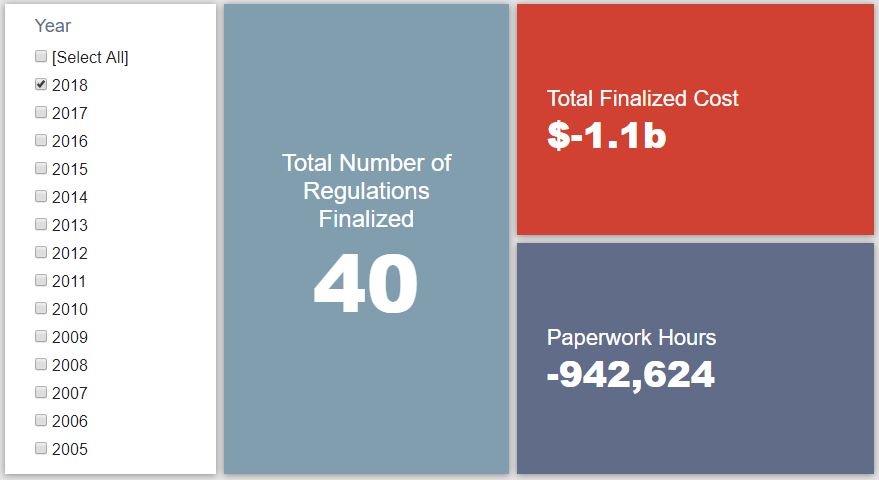Week in Regulation
March 5, 2018
A Nominally Deregulatory Week
Agencies once again fell into a relatively quiet – yet deregulatory – level of published rulemakings this past week. The main driver of savings came from a measure delaying the compliance deadline for a rule requiring hybrid and electric vehicles to produce a certain level of sound to more readily alert pedestrians to their presence. Across both proposed and final rules, agencies published roughly $31 million in net cost savings and 740 hours of additional paperwork. The per capita regulatory burden for 2018 is negative $3.39.
Regulatory Toplines
- New Proposed Rules: 37
- New Final Rules: 58
- 2018 Total Pages of Regulation: 8,938
- 2018 Final Rules: -$1.1 Billion
- 2018 Proposed Rules: -$1.3 Billion
Tracking Regulatory Modernization
The only notable action regarding Executive Order (EO) 13,771 was a Department of Transportation rule responding to a series of petitions on “Minimum Sound Requirements for Hybrid and Electric Vehicles.” While some of the petitions address relatively minor, technical issues, the most significant change rendered is a one-year delay of the compliance deadline for affected manufacturers. This produces estimated annual cost savings of $20.75 million due to “greater flexibility during the manufacturing process” for model year 2019 and 2020 vehicles.
According to AAF analysis, since the start of FY 2018 (beginning Oct. 1, 2017), executive agencies have promulgated 23 deregulatory actions with quantified cost savings against five regulatory measures that impose costs, under the rubric created by EO 13,771 and the administration’s subsequent guidance document on the matter. These rules combine for a net annual savings of roughly $644.9 million. The administration’s goal for FY 2018 is $687 million in net annual savings.
Click here to view AAF’s examination of the administration’s progress under the “one-in, two-out” executive order through the end of Fiscal Year 2017.
State of Major Obama-Era Initiatives
Based on total lifetime costs of the regulations, the Affordable Care Act has imposed costs of $53 billion in final state and private-sector burdens and 176.9 million annual paperwork hours.
Since passage, the Dodd-Frank financial reform legislation has produced more than 82.9 million final paperwork burden hours and imposed $38.9 billion in direct compliance costs.
Total Burdens
Since January 1, the federal government has published $2.4 billion in net costs savings ($1.1 billion from final rules) and new paperwork burdens amounting to 1.3 million hours (however, this includes 942,624 hours cut under final rules). Click here for the latest Reg Rodeo findings.











